A series of heart-wrenching images, depicting child labor in early 20th century America, have been brought to life after being expertly colorized.
Seen among the images is eight-year-old cranberry picker, Jennie Camillo, looking desolate as she attempts to carry her heavy load in Pemberton, New Jersey.
Other pictures depict Michael McNelis, also eight, a Philadelphia newsboy who at the time of the photo had just recovered from his second attack of pneumonia and was found selling papers in a rainstorm.
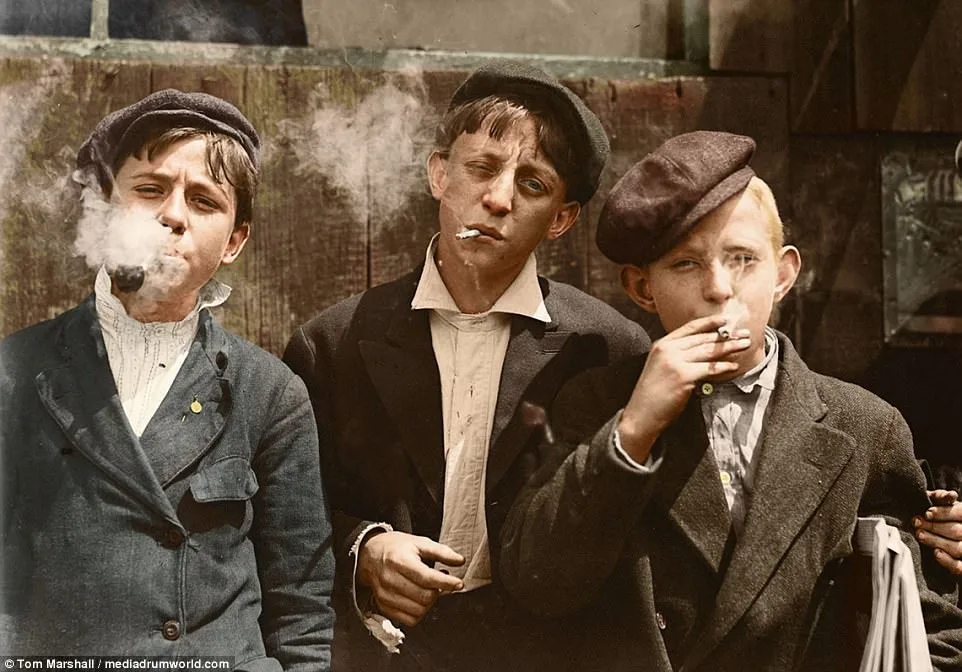
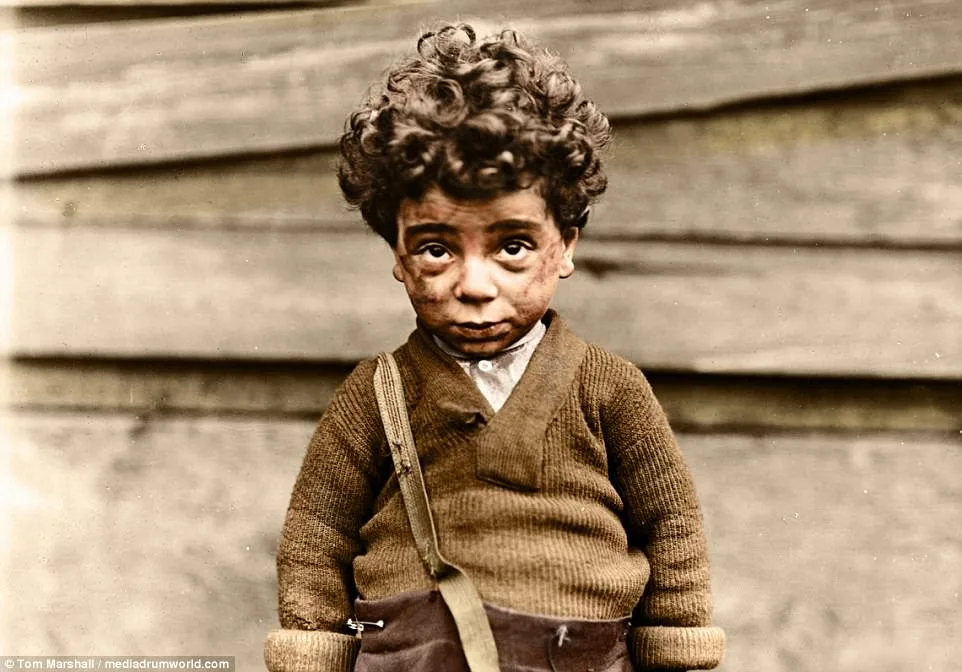
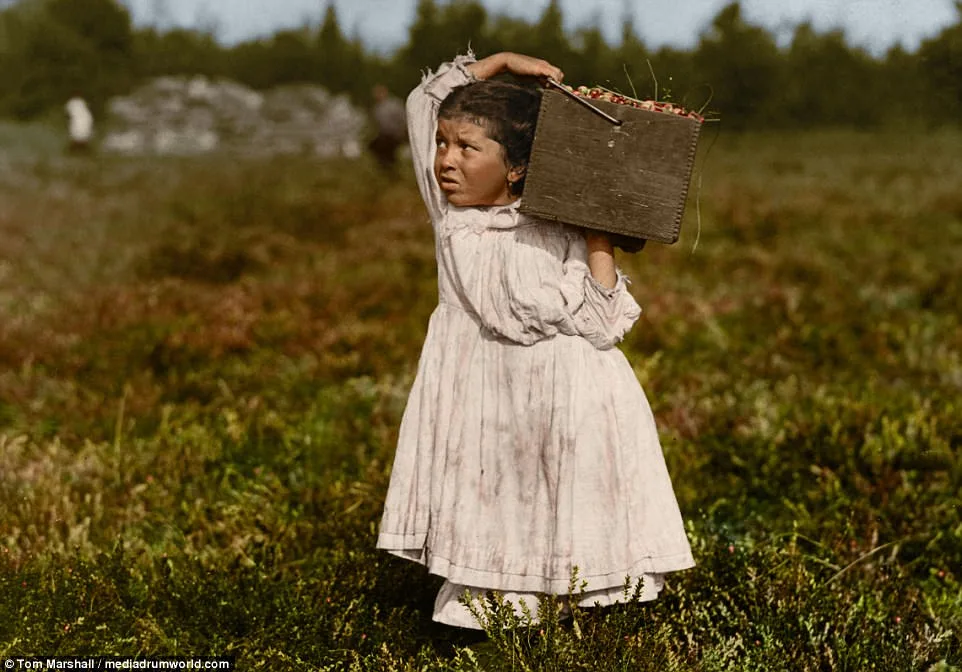
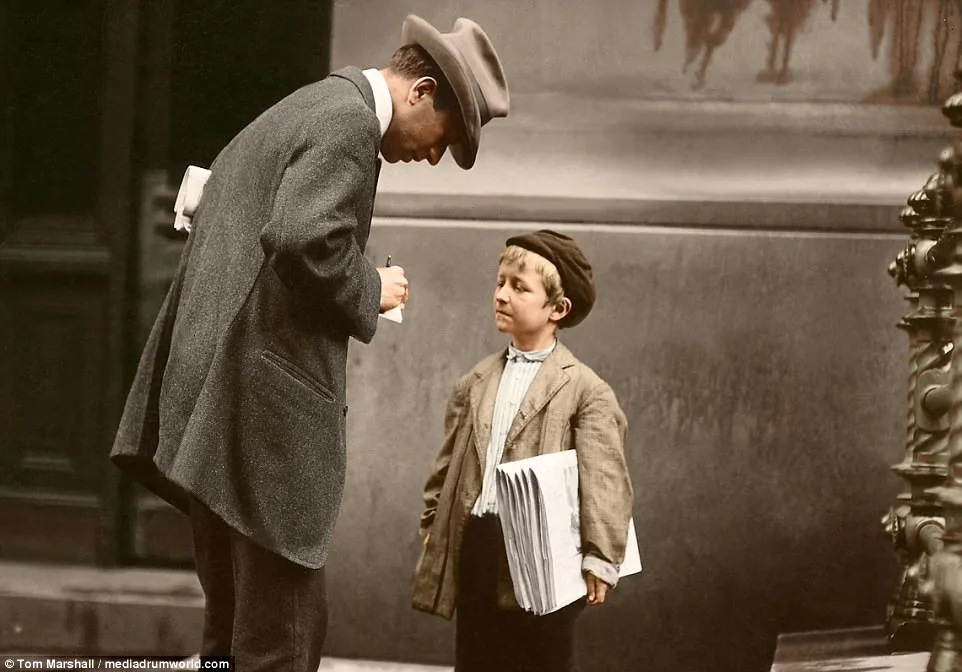
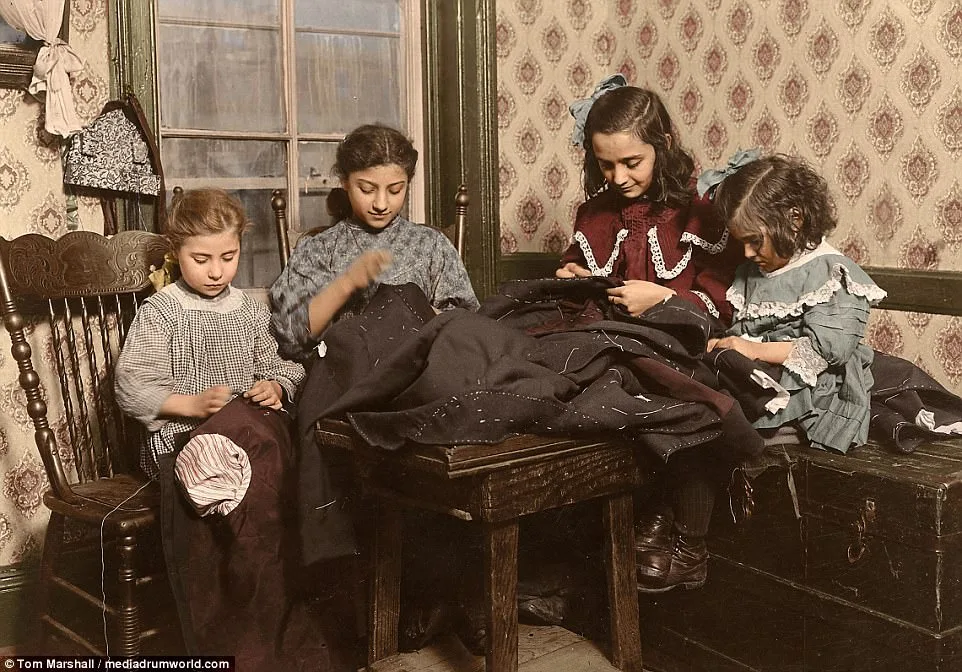
They are the work of UK-based photo colorizer, Tom Marshall, 29, who has painstakingly brought Lewis Wickes Hine’s photographs into the 21st century.
‘Lewis Wickes Hine was an American sociologist and photographer, whose work was instrumental in changing child labor laws in the United States,’ said Mr Marshall.
‘Hine was my favourite photographer. Aside from being technically excellent, his black and white photographs are some of the most important ever taken.
‘His record of the first half of the 20th century is a unique glimpse into the real lives of working-class America, and his work for the National Child Labor Committee (NCLC) was instrumental in bringing about change for the nation’s children.
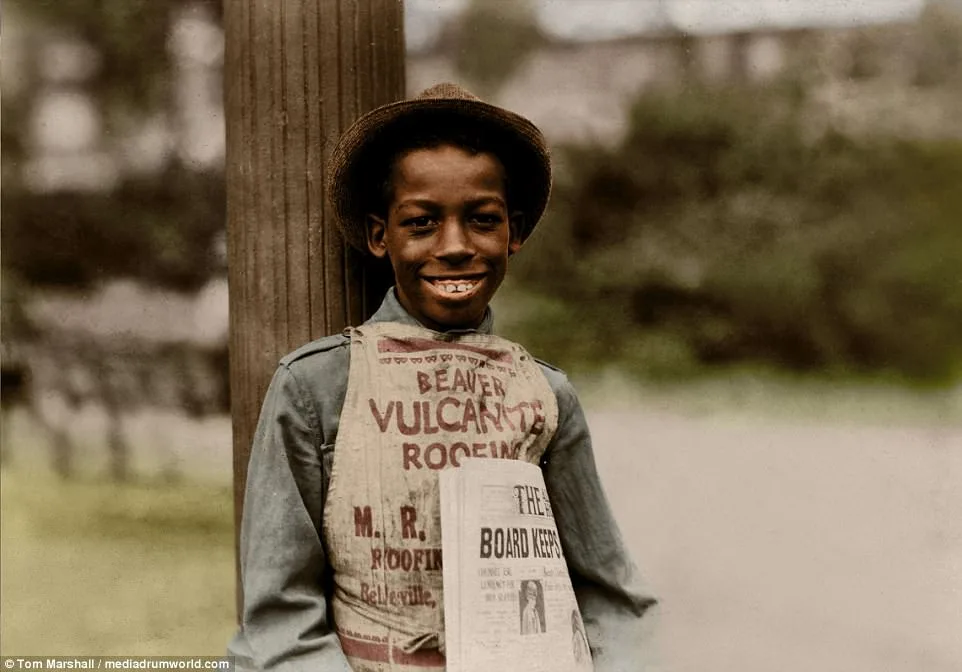

‘Hine’s work was not without risk. The immorality of child labor was hidden away from the wider public at the time, and his exposure of the underhand practices posed a threat to the industry.
‘He was threatened with violence and death from factory foremen, and would resort to wearing disguises in order to gain access to the workshops.’
Mr Marshall went on to talk about his inspiration for the project and how he goes about reimagining historical images.
‘I was inspired to colorize these photos following an article by my friend and fellow colorizer Sanna Dullaway,’ he said.
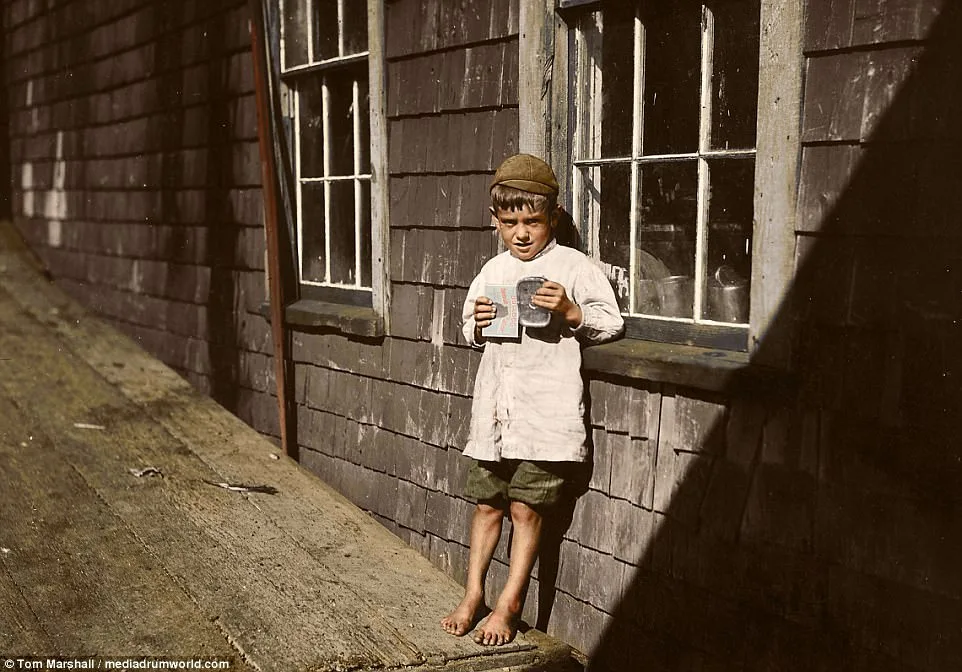
‘As a photo colorizer, my aim is always to try and connect with the photo subjects on another level, something not always possible with a black and white photo.
‘Hine’s photos are perfect for this purpose as they are already very engaging pieces.
‘The eyes of the children are often the first thing we notice, and his photos are so crisp and focused that I believe the addition of colour really helps to bring them to life.
‘As always in the digital age, it is easy to scroll past black and white photos without giving them a second glance, so I hope people will stop to look at these photos and learn more about the children pictured.’
Pictures like these form part of a new book on iconic colorized photographs called Retrographic by author Michael D. Carroll. The book is currently available to buy on Amazon for £15.38.
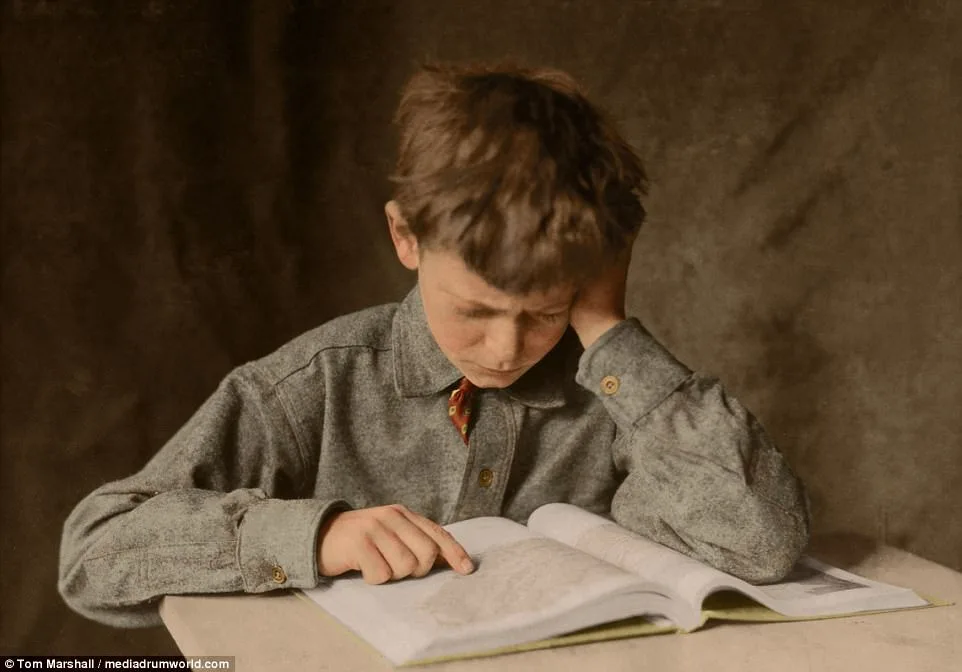
The demand for child labor was a result of the boom in industry at the end of the 19th century. Businesses sought immigrant and child workers to complete cheap work.
Many saw children, with their small hands and energy, as ideal employees. The majority sustained broken bones and suffered from stunted growth and curvature of the spine because of the unsafe conditions and worked long hours on poor pay.
But at the turn of the century, some reformists started voicing their concerns over the children’s welfare and the negative effects on their education.
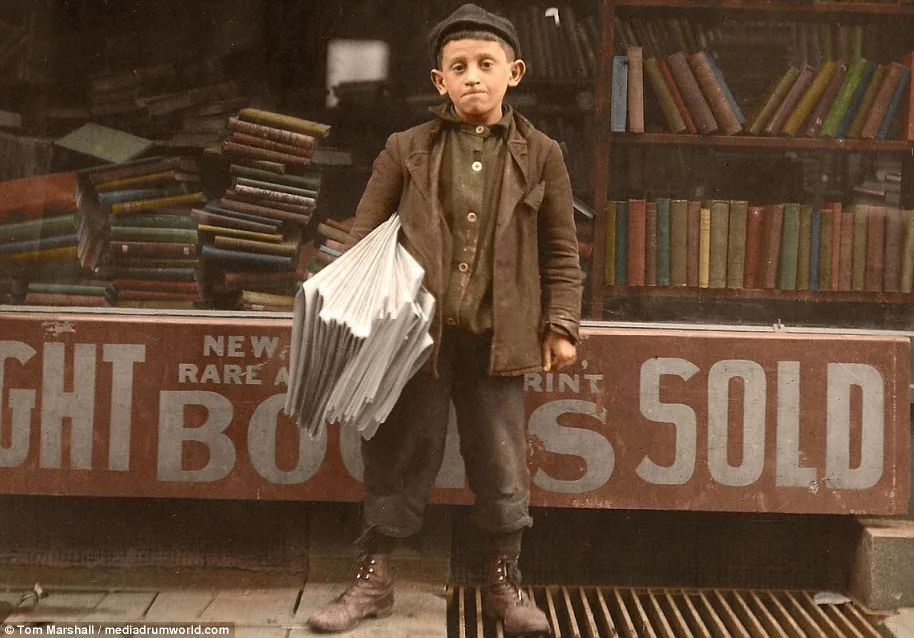
There were fears the practice would stunt America in years to come because of a high number of overworked, under-educated youths.
Set up in 1904, the National Child Labor Committee worked state by state to lobby legislatures to adopt regulations.
In 1915, its efforts started to focus on the federal level.
In 1916, Congress agreed to pass legislation to protect children and restrictions were placed on the employment of children aged under 14 in factories and shops.
And in 1938, after a series of failed or retracted laws, the Committee supported the Fair Labor Standards Act, which prohibited any interstate commerce of goods made through oppressive child labor.
UNICEF estimates that 168million children aged five to 17 are currently involved in forced labor.
However, globally, the incidence of child labor has decreased from 25 per cent to 10 per cent from 1960 to 2003.
Source: dailymail.co.uk





